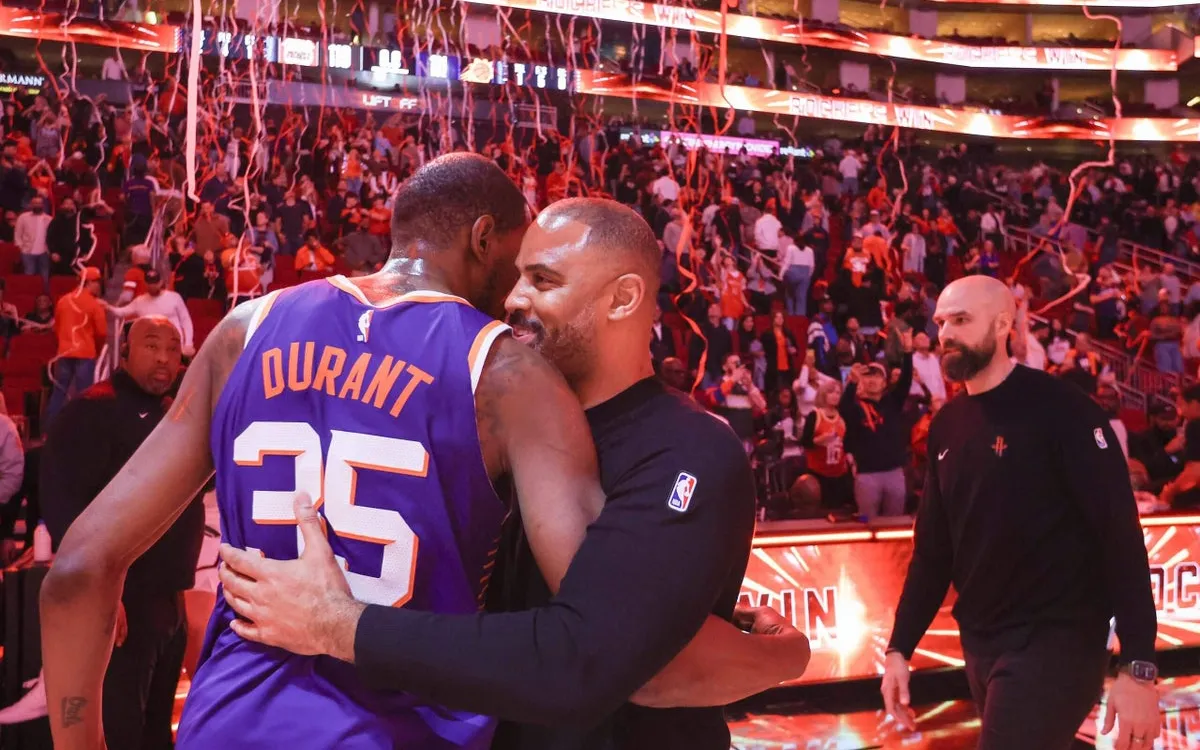
The recent trade of Kevin Durant to the Houston Rockets marks a significant milestone that officially kicks off the NBA offseason cycle. This trade occurs amidst the backdrop of Game 7s and the compressed timeline of the NBA Finals, draft, and free agency periods. The current environment of the collective bargaining agreement mandates swift actions like this one, especially as teams are gearing up for pre-July-1 contract extensions and the imminent draft.
In this major deal, the Houston Rockets will send Jalen Green, Dillon Brooks, the 10th pick in the 2025 draft, and five future second-round picks to the Phoenix Suns in exchange for Kevin Durant. However, the trade cannot be finalized until the moratorium concludes on July 6, as it must occur in the new cap year. According to a team source, the five second-round picks include the 59th pick in this week’s draft, two of three second-round picks Houston holds in 2026, a 2030 pick from Boston, and Houston’s own pick in 2032.
The Rockets will draft for the Suns with picks No. 10 and No. 59 but will not sign those players to contracts, instead retaining their rights until the trade is officially completed on July 6. This trade is likely to expand, as the Suns have time to negotiate the inclusion of Green, Brooks, or any of the draft picks in potential third-party trades, which could create a sizeable trade exception.
For those who follow NBA salary cap intricacies, it’s important to note that the Suns missing the playoffs was pivotal in making this trade possible. Brooks’ playoff bonus now shifts from “likely” to “unlikely,” reducing his cap hit to $21.1 million for the upcoming season. This adjustment allows the combined salaries of Brooks and Green to fit within the parameters needed to match Durant's salary.
The Suns cannot receive more than they send out while remaining over the first apron, which they will be even if they release Cody Martin and decline the option on Vasilije Micić. The decision to send the 2025 pick rather than an unprotected first-round pick is strategic for both teams, as it allows the Rockets to maintain flexibility for future trades while giving the Suns a guaranteed lottery pick now rather than a potential one two years down the line.
From the Rockets' perspective, this trade alleviates some potential risks associated with the Suns’ 2027 and 2029 draft years, particularly since they own unprotected picks from Phoenix in those years. The Rockets’ current roster is already populated with young talent, making the addition of another young player less appealing. They need to ensure they can trade their own picks without violating the Stepien Rule, which is made easier by acquiring the Suns' picks.
Moreover, the 59th pick in this trade has potential value. The Suns can select a player and roster him at a lower cost than signing a veteran at minimum salary, which could result in significant savings against the luxury tax.
On the basketball front, the Rockets are looking to solidify their standing as contenders. After struggling against the Golden State Warriors in the first round of the playoffs, this trade signals a commitment to improvement. The Rockets had previously extended Green’s contract to facilitate trades like this one, and Durant's experience and skills will enhance their offensive capabilities.
The Rockets have already committed three years and $39 million to Steven Adams and likely plan to re-sign Fred VanVleet to a more manageable long-term deal. The front-loading of Adams’ contract suggests a similar approach for VanVleet, which would help ease future salary cap pressures when extensions for players like Tari Eason and Amen Thompson come into play.
For the Suns, the acquisition of Green and Brooks significantly impacts their roster composition. With seven of their ten contracted players being shooting guards, they need to optimize their lineup, which may involve waiving non-guaranteed deals or trading players like Grayson Allen and Royce O’Neale. These moves are essential for getting under the second apron and unfreezing their 2032 draft pick.
Despite the challenges, the Suns have secured a decent return for Durant. They now have additional draft capital and two starters, with Brooks expected to fill the role of defensive stopper. Although they may have overpaid in the initial Durant trade, this latest transaction sets them up for better long-term prospects.
With the Durant trade completed, the focus shifts to other teams and player movements within the league. Questions remain about what strategies teams such as Miami, Minnesota, and San Antonio will pursue now that a major player is off the market. Will other stars become available in the coming weeks, or is this a sign of reduced player movement among A-list talent?
Ultimately, this trade has significant implications for both the Houston Rockets and Phoenix Suns. The true measure of success will depend on how both franchises navigate the next steps in their respective journeys.